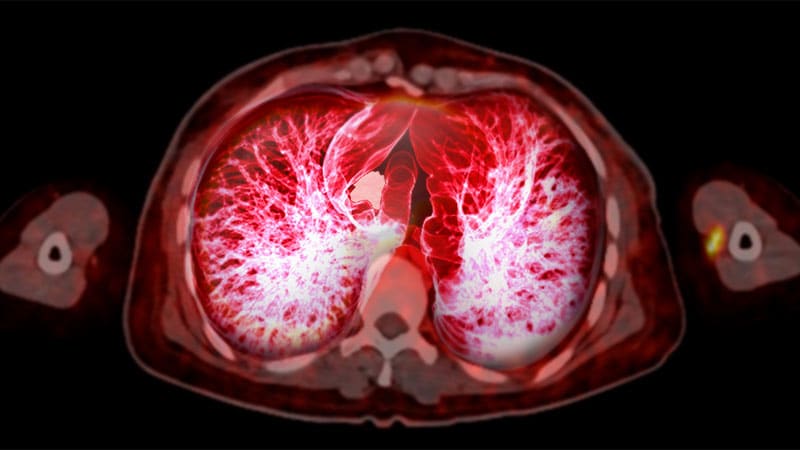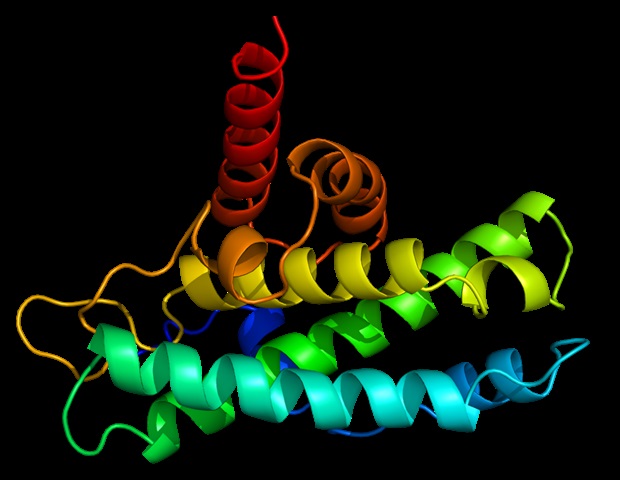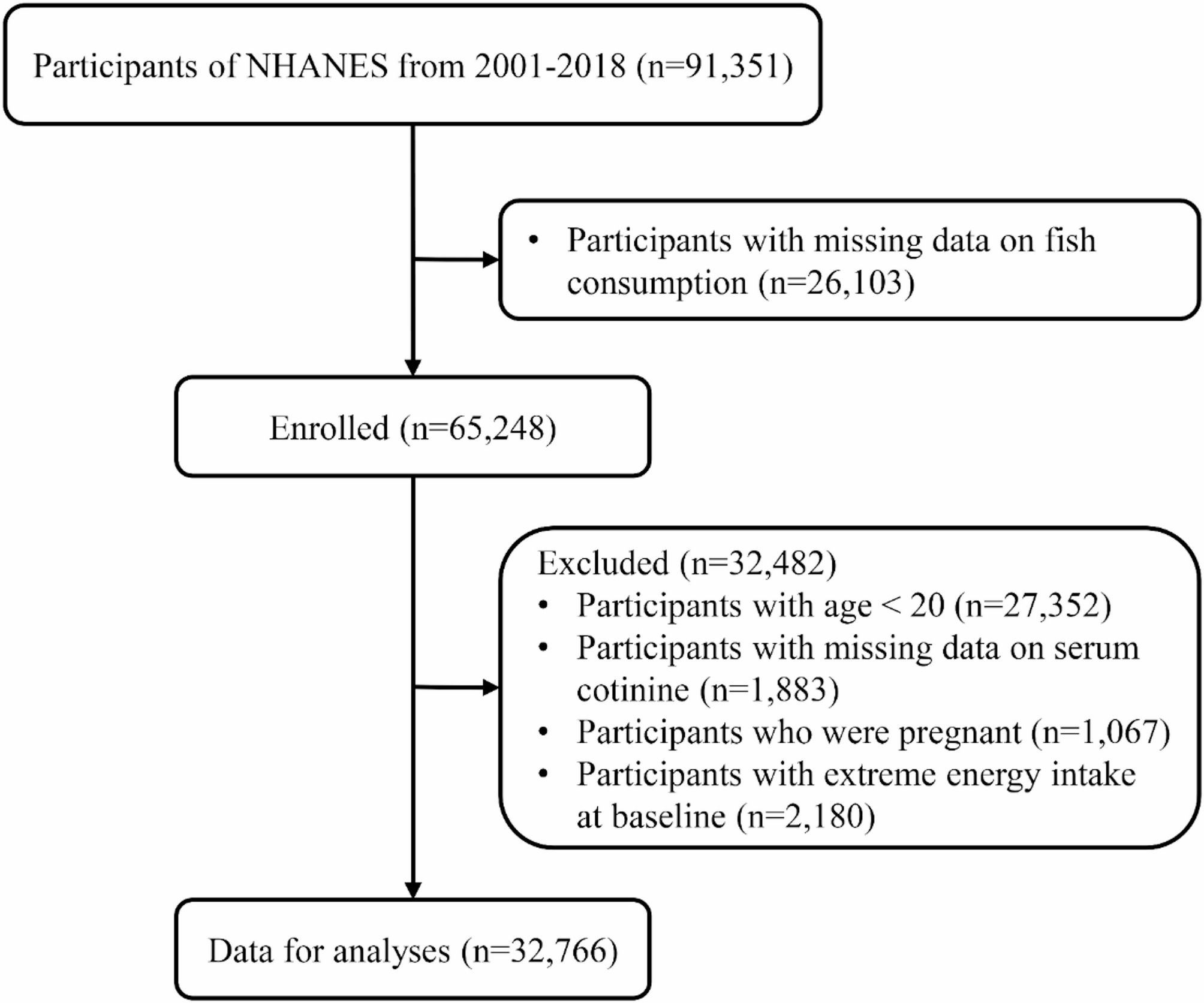Introduction
Urinary tract infections (UTIs) refer to the infection of the bladder and kidneys having clinical manifestations including cystitis, pyelonephritis, prostatitis, urosepsis, and catheter-associated UTIs.1 These infections are clinically divided into complicated, uncomplicated, and acute pyelonephritis.2 Urinary tract infections are among the most prevalent bacterial infections affecting over 14 million cases reported annually posing significant health and economic burden worldwide.3 Women are disproportionately affected due to their anatomical and physiological features, with 27–48% experiencing recurrent infections.4,5
In Uganda, the national prevalence of UTIs is approximately 24.92%, with higher rates in the Western region including Mbarara District, and the Northern region where the prevalence has reached up to 71.94% and this has been attributed to demographic factors such as age, gender, hygiene practices, and comorbidities, such as diabetes and catheter use.6
Gram-negative bacteria, particularly Escherichia coli, are the leading uropathogens responsible for UTIs. Other significant pathogens include Klebsiella pneumoniae, Staphylococcus aureus, and Enterococcus faecalis.6 However, uropathogens have developed resistance to routinely used antibiotics7, such as penicillins, cephalosporins and fluoroquinolones, and tetracyclines from 10% to 20%8,9 in 2014 to approximately 44.6–95.7% in 202110,11 posing a challenge for empirical treatment of UTIs. Furthermore, self-treatment and emerging antimicrobial-resistant patterns play an important role in controlling UTIs in Uganda.10,12
Antibiotic resistance is a consequence of inappropriate broad-spectrum antibiotic use, inadequate infection control methods, and environmental contamination by pharmaceutical waste.5,10,13
Regardless of the growing threat of antimicrobial resistance, there is scant local data to guide empiric therapy in Uganda. The specific objectives were to describe the frequency and distribution of isolated uropathogens by specimen type and patient demographic characteristics, and to evaluate temporal trends in antimicrobial resistance, including the prevalence of multidrug-resistant (MDR) and extensively drug-resistant (XDR) phenotypes among these isolates.
Therefore, this study aimed to analyze the prevalence of common uropathogens and their antimicrobial resistance patterns among patients at Mbarara Regional Referral Hospital (MRRH).
Methods and Materials
Study Design and Setting
The retrospective study was conducted at Mbarara Regional Referral Hospital (MRRH) – Microbiology Department, a tertiary-level teaching hospital in south-western Uganda. MRRH has over 600 inpatient beds and is affiliated with Mbarara University of Science and Technology (MUST), the main campus for teaching undergraduate and postgraduate health sciences programs. The clinic has departments for internal medicine, pediatrics, surgery, obstetrics, and diagnostic services. The microbiology lab is staffed with trained microbiologists and can perform routine bacterial culture, biochemical identification, and antimicrobial susceptibility testing (AST). Culture data from 1st January 2019 to 31st March 2024 were retrieved from WHONET, a data platform supported by WHO and used globally for surveillance of antimicrobial resistance (AMR).
Inclusion and Exclusion Criteria
Urine specimens were encompassed if they were culture positive and either obtained via midstream urine (MSU) or catheterization and contained a bacterial load of ≥105 colony-forming units per milliliter (CFU/mL). Only information with complete demographic data (age, sex), valid organism identification, and AST profiles were included. To avoid duplication due to repeated infections or prolonged time of stay, only a single patient isolate per patient was used. Excluded were patient records with inadequate demographic data, missing AST values, or uncertain species identification. Staphylococcus aureus and other potential skin flora were also excluded when isolated from non-sterile samples due to their established role as contaminants of urine samples without catheters.14–16
Culture Methods and Identification
The cultures for all urine samples were processed within a two-hour period of sample collection. With the assistance of a 0.01 mL calibrated sterile loop, each sample was inoculated on MacConkey agar, blood agar, and chocolate agar (HiMedia, India). Cystine-lactose-electrolyte-deficient (CLED) agar was used occasionally to suppress swarming by Proteus species. Plates were incubated aerobically at 37°C for 24 hours. Significant bacteriuria was signaled by growth ≥105 CFU/mL, as per WHO GLASS and CLSI recommendations.17 Identification of the isolate started with Gram staining and colony morphology examination. Gram-negative pathogens were identified further by oxidase, SIM (sulfur, indole, motility), triple sugar iron (TSI), and citrate tests. Gram-positive isolates were identified by catalase and coagulase tests.14
Antimicrobial Susceptibility Testing
AST was carried out by Kirby–Bauer disc diffusion method on Mueller–Hinton agar (HiMedia, India). Results were interpreted using CLSI M100 (33rd edition, 2023) guidelines.17 Antibiotics tested reflected empirically prescribed options in Uganda and included beta-lactams (ampicillin, amoxicillin-clavulanate, ceftriaxone), aminoglycosides (gentamicin), fluoroquinolones (ciprofloxacin, ofloxacin), sulfonamides (sulfamethoxazole), nitrofurans (nitrofurantoin), carbapenems (imipenem, meropenem), and erythromycin and chloramphenicol. Conservative intermediate susceptibility interpretation was considered resistant, as outlined by WHO guidelines. Quality control was ensured by testing for standard reference strains (Escherichia coli ATCC 25922, P. aeruginosa ATCC 27853, and S. aureus ATCC 25923) on a weekly basis to ensure disc potency and medium performance.17
Isolate Selection for Analysis
Isolates were grouped into three categories including true uropathogens, conditional pathogens (often isolated but not necessarily pathogenic), and probable contaminants.14,18 Only true uropathogens with ≥25 isolates were preserved for future AMR and multi-drug resistance (MDR) testing to ensure statistical power. They included Escherichia coli, Klebsiella spp., Klebsiella pneumoniae, Citrobacter spp., and Enterococcus spp., microorganisms known to be the most prevalent etiologic urinary tract infection (UTI) pathogens worldwide.15–17,19 Although S. aureus was repeatedly isolated, it was excluded on microbiological and epidemiological grounds, because its recovery from non-catheterized urine is typically indicative of contamination rather than infection.14–17,19
Classification of Resistance
Resistance was defined as non-susceptibility to one or more agents. Multidrug resistance (MDR) was defined as resistance to greater than one drug in three antimicrobial classes by international consensus.20 A graded classification system was also used: R0 = no resistance, R1 = one class, R2 = two classes, R3 = three classes, and R4 = four or more classes of resistance.21 This stratification allowed a gradient interpretation of resistance severity and was used in descriptive tables. Phenotypic resistance mechanisms were inferred where possible: isolates resistant to third-generation cephalosporins were classified as presumptive ESBL producers; carbapenem resistance suggested carbapenemase production; and others were labeled classical MDR in the absence of a known mechanism.
Statistical Analysis
Data were cleaned and manipulated using Python 3.8 inside Google Colab. Cleaning and transformation were done with the pandas and numpy libraries. Chi-square tests were used to investigate association between categorical variables with the scipy.stats module, and the significance threshold was taken as p < 0.05. To evaluate resistance patterns over time, quarterly resistance ratios were calculated for each organism-antibiotic pair. Time trend analysis was performed using the Mann–Kendall non-parametric test of the pymannkendall package, a method used to identify monotonic trends in non-parametric microbiological surveillance data.22–25 A 3-quarter rolling average was applied to smooth fluctuations, and a p-value ≤0.05 was considered statistically significant.
Results
Patient Demographics and Dataset Overview
The data set comprised 939 unique patient records each representing a culture-positive urine sample. The average age of all patient records is 40 years old, with an 18-year standard deviation. The recorded age ranges from newborns (0 years) to 105 years. The median age is 38 years old, while the 25th percentile of the population is 27 years of age or younger. With an IQR of 25 years, the 75th percentile indicates that 75% of the subjects are 52 years of age or younger. There are 648 (69.0%) females in this dataset, and 291 (31.0%) male, giving a ratio of 1:0.4.
Uropathogen Distribution
Among the 939 isolates, Escherichia coli was the most isolated pathogen, accounting for 428 isolates (45.6%), followed by Klebsiella spp. with 385 isolates (41.0%). Klebsiella pneumonia was identified in 58 isolates (6.2%) while Citrobacter spp. and Enterococcus spp. contributed 42 (4.5%) and 26 (2.8%) isolates, respectively.
Distribution of Uropathogens by Gender
Female patients were 648 (69.0%) and 291 (31.0%) to males. Escherichia coli was the most frequent isolate, being recovered in 303 out of 428 female-related isolates (70.8%) and 125 out of 428 (29.2%) from males as shown in Figure 1. A predominance of female-related samples was also observed for Klebsiella spp. (252/385, 65.5%), with the disparity was most marked for Klebsiella pneumoniae, since 46 of 58 isolates (79.3%) were from females. Citrobacter spp. showed a similar trend (32/42, 76.2%), while Enterococcus spp. had a more equal sex distribution (15/26, 57.7% female). Organism-specific chi-square tests of independence revealed no statistically significant associations between sex and isolate distribution for any of the five organisms: Citrobacter spp. (χ² = 0.373, p = 0.5412), Enterococcus spp. (χ² = 0.469, p = 0.4936), Escherichia coli (χ² = 0.217, p = 0.6411), Klebsiella pneumoniae (χ² = 1.121, p = 0.2898), and Klebsiella spp. (χ² = 0.730, p = 0.3930).
|
Figure 1 Distribution of the most common uropathogenic isolates (≥25 isolates) by sex and organism (n = 939). Each organism is represented by three bars: blue for total isolates, green for isolates from female patients, and red for isolates from male patients. Organisms include Escherichia coli, Klebsiella spp., Klebsiella pneumoniae, Citrobacter spp., and Enterococcus spp.
|
Prevalence of Urine Pathogens and Age
The five most frequently identified uropathogens showed distinct distribution patterns across patient age groups. The uropathogens showed distinct patterns across patient age groups. Escherichia coli was most isolated from cultures from individuals from the 46- to 65-year-old age group (99/428, 23.1%) followed by the 36- to 45-year-old (92/428, 21.5%), and 26- to 35-year-old groups (84/428, 19.6%). Klebsiella spp. showed a distinct peak in the 26–35 age group (120/385, 31.2%) and remained prevalent in the 46–65 (82/385, 21.3%) and 36–45 (69/385, 17.9%) age groups. Klebsiella pneumonia showed the same trend with the majority being recovered from cultures from individuals between the age group 46–65 years (19/58, 32.8%) and 15–25 years (13/58, 22.4%). Citrobacter spp. were found predominantly in adults 36–45 years (12/42, 28.6%) and 46–65 years (10/42, 23.8%), whereas Enterococcus spp. reached the 36–45 (9/26, 34.6%) and 26–35 (7/26, 26.9%) age groups. A chi-square test of independence confirmed a statistically significant association between the type of uropathogen recovered and the age group of individuals from whom the culture-positive urine samples were obtained (χ² = 39.83, df = 20, p = 0.0052). The greatest deviations from expected frequencies were noted among Escherichia coli and Klebsiella spp. within the 26–35 and 46–65-year age group (Figure 2).
 |
Figure 2 Distribution of the most common uropathogenic isolates (≥25 isolates) by age group. Each group of bars represents a single organism. Bars are color-coded by age group: blue for 0–14 years, green for 15–24 years, Orange for 25–44 years, purple for 45–64 years, and red for ≥65 years. Bar heights reflect the proportion of isolates from each age group, expressed as percentages.
|
There is a statistically significant association between organism type, age category, and sex (χ² = 74.886, df = 26, p < 0.0001). Frequency pattern trends anticipated that Escherichia coli isolates were more frequently isolated from female urine samples in every age group especially among females aged 46–65 years (anticipated: 67.996) compared to males (31.004). Following the same trend, Klebsiella spp. showed a more anticipated recovery in females, especially in the 26–35 years age group (82.419 vs 37.581 for males). Although less frequently recovered, Citrobacter spp., Klebsiella pneumoniae, and Enterococcus spp. also exhibited differences in recovery frequencies among age–sex subgroups.
Overall and Organism-Specific Antibiotic Resistance
A total of 893 (95.1%) were resistant to at least one tested antibiotic. Klebsiella spp. was the most resistant with 382 out of 385 isolates (99.2%) being resistant to at least one antibiotic. This was followed by Escherichia coli (396/428, 92.5%), Enterococcus spp. (25/26, 96.2%), and Klebsiella pneumoniae (54/58, 93.1%). Citrobacter spp. reported the lowest resistance rate among the top five organisms, having 36 out of 42 isolates (85.7%) resistant.
Trends in Antibiotic Resistance and Statistical Significance 2019–2024
Highest resistance rates were observed sulfamethoxazole showing resistance in 619 of 676 isolates (91.6%), followed closely by ampicillin (274/300, 91.3%). High bacterial resistance to Erythromycin was observed with 16 of 22 isolates (72.7%) demonstrating resistance. Over half of the pathogens were also resistant to clindamycin (306/563, 54.4%), chloramphenicol (326/611, 53.4%), and amoxicillin/clavulanic acid (324/621, 52.2%). Resistance to ceftriaxone and ciprofloxacin was 46.0% and 28.1%, respectively. Lower rates were seen with gentamicin (18.2%) and nitrofurantoin (22.1%).
In contrast, bacteria showed lower resistance rates to carbapenems with 10.3% and 8.7% resistance to Imipenem and Meropenem, respectively, as shown in Table 1.
 |
Table 1 Resistance Rates to Common Antimicrobial Agents in Urine Cultures at Mbarara Regional Referral Hospital, 2019–2024
|
A detailed summary of the resistance of the uropathogens to different antibiotics is presented in Table 2. Resistance was defined as non-susceptibility to the tested antibiotic (R No [%]), with the total number of isolates tested (T) indicated for each combination. Escherichia coli demonstrated significant resistance to several antibiotics, with the highest resistance observed to Ampicillin (174/190, 91.6%), followed by Sulfamethoxazole (240/274, 87.6%) and Clindamycin (148/199, 74.4%). Escherichia coli resistance to Chloramphenicol was (214/341, 62.8%) and Clindamycin (122/313, 39.0%). Klebsiella pneumoniae displayed significant resistance to Ampicillin (27/28, 96.4%) and Sulfamethoxazole (24/36 isolates, 66.7%), while also showing moderate resistance to Ceftriaxone (15/22 isolates, 68.2%) and Clindamycin (29/32, 90.6%). Citrobacter spp. were most resistant to Ampicillin (3/3, 100%), Ciprofloxacin (13/18, 72.2%), and Sulfamethoxazole (16/23, 69.6%). Resistance to Chloramphenicol was also high (4/7, 57.1%). Enterococcus spp. were most resistant to Erythromycin (16/22, 72.7%) and Chloramphenicol (7/10, 70.0%). Sulfamethoxazole resistance was found in 13 of 14 isolates (92.9%).
 |
Table 2 Distribution of the Most Common Uropathogens and Their Resistance to Common Antibiotics at Mbarara Regional Referral Hospital From January 1, 2019, to December 31, 2024
|
Temporal Mono Resistance Trends
For analysis of trends of mono resistance over time, quarterly data over the period of 2019 to 2024 were analyzed by comparing them using the Mann-Kendall trend test. Rising resistance was observed in Klebsiella spp. against Ceftriaxone (τ = 0.581, p = 0.0028), Cefotaxime (τ = 0.5909, p = 0.0090), and Imipenem (τ = 0.3099, p = 0.0415). An increasing trend of Escherichia coli was observed against Cefotaxime (τ = 0.3791, p = 0.0291). As shown in Figure 3a and Table 3, while raw quarterly resistance values (blue line) fluctuate, the 3-quarter rolling average (orange dashed line) reveals a sustained upward trajectory, confirming these trends. On the other hand, declining resistance was observed for Amoxicillin/Clavulanic Acid between Klebsiella spp. (τ = –0.5238, p = 0.0068) and Escherichia coli (τ = –0.3421, p = 0.0378) as shown in Table 3. This decline is evident in Figure 3b, where both raw values and rolling averages indicate a consistent downward pattern. No statistically significant trends toward antibiotic resistance (p ≥ 0.05) were detected for the majority of organism–antibiotic pairs under study. These included resistance of Klebsiella spp. and Escherichia coli to agents in widespread use such as Gentamicin, Ciprofloxacin, Sulfamethoxazole, and Chloramphenicol. Six organism–antibiotic combinations were omitted from the trend analysis due to sparse data (<12 quarters) and primarily affected Citrobacter spp., Klebsiella pneumoniae, and Enterococcus spp.
 |
Table 3 Significant Trends in Antimicrobial Resistance Among Escherichia coli and Klebsiella spp. From 2019 to 2024
|
 |
Figure 3 Antimicrobial resistance trends among urinary isolates from Mbarara Regional Referral Hospital (MRRH), 2019–2024. (a) The pattern of resistance to cefotaxime among Escherichia coli is increasing (p = 0.029); (b) There is declining resistance to amoxicillin/clavulanic acid in Klebsiella spp. (p = 0.007). Dots: raw percentages of resistance for each quarter. Dashed lines: 3-quarter rolling average, used to reduce short-term fluctuations and expose longer-term trends.
|
The observed directional patterns including increasing cefotaxime resistance in Escherichia coli and decreasing amoxicillin/clavulanic acid resistance in Klebsiella spp. reinforce the value of combining visual smoothing with statistical trend analysis. Through the use of 3-quarter rolling averages coupled with Mann–Kendall trend analysis, we were able to detect persistent, monotonic trends in AMR that would have been obscured by quarterly fluctuation.
Multidrug Resistance Patterns (MDR) Among Uropathogens
The resistance pattern of bacterial isolates by resistance levels (R0 to >R7) shows elevated resistance to multiple antibiotics in major uropathogens, as shown in Table 4. Escherichia coli carried a high resistant burden with only 7.5% of the isolates being fully susceptible to all antibiotics tested (R0). The majority were resistant to at least three antibiotics, notably at R2 (32.7%), R3 (22.0%), and R4 (12.1%). Klebsiella spp. displayed a similar trend, where 42.3% were resistant to three antibiotics (R3) and 26.3% to four and above (R4–>R7), and only 0.8% of the isolates were fully susceptible as shown in Table 5.
 |
Table 4 Distribution of Bacterial Isolates Across Antibiotic Resistance Categories (R0 to R7) From Sensitivity to Increasing Resistance to Multiple Antibiotics Among Patients at Mbarara Regional Referral Hospital From January 1, 2019, to December 31, 2024
|
 |
Table 5 Summary of Organisms, Resistance, and MDR Patterns by Specimen Type
|
Klebsiella pneumoniae presented with a more ominous resistance profile with 12.1% of the isolates resistant to at least seven antibiotics. Enterococcus spp. had elevated levels of resistance with 76.9% isolates in R2–R4 with none of them with greater than four-drug resistance.
Of 939 urine isolates tested, 534 (56.9%) were classified as multidrug-resistant (MDR), 356 (37.9%) were resistant to one or two groups of antimicrobials, and 46 (4.9%) were susceptible. An additional 3 isolates (0.3%) met the criteria for extensively drug-resistant (XDR) phenotype. Of the MDR strains, 374 (70%) were extended-spectrum β-lactamase (ESBL) producers, most commonly in Escherichia coli and Klebsiella spp. One MDR isolate (0.2%) was classified as carbapenemase-producing Klebsiella pneumoniae (KPC), and one (0.2%) produced ESBL and KPC enzymes. The remaining 158 MDR isolates (29.6%) were resistant to more than three antimicrobial classes with no detection of a known resistance mechanism and belonged to the classical MDR category. Among the XDR isolates, one expressed ESBL alone, one KPC alone, and one co-produced ESBL and KPC. None of the strains met the criteria for vancomycin-resistant Enterococcus spp. (VRE), or pan-drug-resistant (PDR) phenotypes.
A phenotypic analysis of MDR and XDR phenotypes per organism is demonstrated in Figure 4. Of the 194 MDR Escherichia coli, 141 (72.7%) were ESBL producers, and 53 (27.3%) did not have a phenotypic mechanism identified. In Klebsiella spp. (n = 285), 199 (69.8%) were ESBL producers. Of the 28 MDR Klebsiella pneumoniae isolates, 17 (60.7%) were ESBL-positive, 2 (7.1%) expressed KPC, 2 (7.1%) co-produced ESBL and KPC, and 7 (25.0%) showed no phenotypic mechanism. Three additional Klebsiella pneumoniae isolates met criteria for XDR, including one ESBL producer, one KPC producer, and one co-producing both. In 21 MDR Citrobacter spp. isolates, 18 (85.7%) were ESBL producers, and 3 (14.3%) did not have any detected mechanism. All 9 MDR Enterococcus spp. isolates did not have phenotypic evidence of vancomycin resistance.
 |
Figure 4 Distribution of MDR and XDR among most common uropathogenic isolates. Each bar represents the relative distribution of phenotypic resistance mechanisms among multidrug-resistant (MDR) and extensively drug-resistant (XDR) isolates for organisms with ≥25 resistant isolates. The phenotypes are distinguished by color: Orange (MDR: ESBL), light blue (MDR: ESBL, KPC), green (MDR: KPC), dark blue (MDR: no detected mechanism), yellow (XDR: ESBL), brown (XDR: ESBL, KPC), and pink (XDR: KPC). Organisms included are Citrobacter spp., Enterococcus spp., Escherichia coli, Klebsiella pneumoniae, and Klebsiella spp.
|
The prevalence of resistance classes among MDR and XDR uropathogens is depicted in Figures 4 and 5. β-Lactam resistance was the highest among all uropathogens, covering 100.0% of Enterococcus spp. (9/9), 96.4% of Klebsiella pneumoniae (27/28), 90.7% of Escherichia coli (176/194), and 90.5% of Citrobacter spp. (19/21). Sulfonamide resistance was also high, and it was highest among Klebsiella spp. (92.6%, 264/285) and Escherichia coli (68.0%, 132/194). Fluoroquinolone resistance ranged from 17.5% for Klebsiella spp. to 39.3% for Klebsiella pneumoniae. Resistance to aminoglycosides was found in 22.2% to 28.6% of Gram-negative uropathogens. Macrolide resistance was found only in Enterococcus spp. (66.7%, 6/9). Carbapenem resistance was found in 23.8% of Citrobacter spp. and 14.3% of Klebsiella pneumoniae. Amphenicol resistance was found in 58.2% of Klebsiella spp. and 39.3% of Klebsiella pneumoniae, while resistance to nitrofurans was highest in Klebsiella pneumoniae (39.3%) and Escherichia coli (13.9%).
 |
Figure 5 Resistance class profiles of MDR and XDR uropathogens isolated at Mbarara Regional Referral Hospital, 2019–2024.The heat map presents the number and percentage of isolates (n/N, %) resistant to at least one agent within each antibiotic class. Organisms are shown on the y-axis and antibiotic classes along the x-axis. Darker shading reflects higher MDR burden.
|
Quarterly MDR Trends
Quarterly temporal trends in multidrug resistance (MDR) among uropathogens exhibited organism-specific variability as shown in Figure 6. Trend direction and significance were assessed using the Mann-Kendall non-parametric trend test. Escherichia coli demonstrated a statistically significant increasing trend in MDR proportions over time (p = 0.015. There was no significant temporal trend in MDR ratios for Klebsiella spp. (p = 0.207), Klebsiella pneumoniae (p = 1.000), or Enterococcus spp. (p = 0.333).
 |
Figure 6 Quarterly trends in multidrug resistance (MDR) among predominant uropathogens isolated at Mbarara Regional Referral Hospital between 2019 and 2024. Panels depict 3-quarter rolling average MDR proportions for (a) Klebsiella spp., (b) Escherichia coli, (c) Klebsiella pneumoniae, and (d) Enterococcus spp. Trends were assessed using the Mann–Kendall test; corresponding p-values are displayed within each plot. A horizontal reference line at 50% indicates the mid-threshold for MDR burden.
|
Despite the absence of monotonic trends in a few of the species, MDR levels were consistently high throughout the entire duration of the study. Klebsiella pneumoniae tended to have MDR percentages of or near 100% in many quarters but with huge variations. Enterococcus spp. experienced an elevation in short-term MDR from 2021 to 2022 but dropped. Klebsiella spp. experienced MDR rates far beyond the 50% mark for the majority of portions but with huge quarter-to-quarter variability.
Specimen-Type Distribution of Resistance and MDR Patterns
Organism-specific resistance and MDR pattern analysis stratified by specimen type revealed considerable differences. The vast majority of isolates were from midstream urine (97.9%, n=919), while catheter-derived samples comprised a minority proportion (2.1%, n=20). Of the catheter samples, the predominant organism was Escherichia coli (55.0%), followed by Klebsiella pneumoniae (25.0%) and Citrobacter spp. (20.0%). All catheter specimen isolates were 100% resistant, with MDR in 70.0% overall. Significantly, 100% of the catheter Citrobacter spp. were MDR, followed by 72.7% Escherichia coli and 40.0% Klebsiella pneumoniae.
Escherichia coli was the predominant organism in midstream urine cultures (45.4%), followed by Klebsiella spp. (41.9%), but less often were Klebsiella pneumoniae, Citrobacter spp., and Enterococcus spp. The resistance rates for these organisms were all high and ranged from 84.2% among Citrobacter spp. to 99.2% among Klebsiella spp. Prevalence of MDR among midstream isolates was also high, with the highest recorded in Klebsiella spp. (74.0%), followed by Klebsiella pneumoniae (45.3%), Escherichia coli (44.4%), Citrobacter spp. (44.7%), and Enterococcus spp. (34.6%). These findings highlight specimen type-specific variation in resistance and MDR prevalence among leading uropathogens.
Discussion
The study is in agreement with the global observation that females are disproportionately affected by urinary tract infections (UTIs). The higher prevalence of UTIs in females may be attributed to anatomical differences, such as the shorter urethra, which facilitates bacterial entry into the urinary tract, and hormonal changes which may alter vaginal and urinary flora, and anterior vaginal prolapse.26–28
Furthermore, Escherichia coli was the most frequently isolated organism in this study, particularly among females (70.8%), aligning with global findings that identify Escherichia coli as the leading cause of community-acquired and healthcare-associated urinary tract infections (UTIs).27,29,30 Comparable studies from Uganda,9,31,32 Sub-Saharan Africa29,33,34 Asia,35,36 and America37 revealed Escherichia coli prevalence rates of 30–70% that is consistent with our findings, highlighting its global clinical importance. This may be attributed to the virulence factors of Escherichia coli, like as adhesins, hemolysins, and biofilm-formation, which enhance its ability to colonize the urinary tract.38 While Klebsiella spp., Klebsiella pneumoniae, and Citrobacter spp. also showed a female predominance, Enterococcus spp. were more evenly distributed by sex.
The difference in aetiological agents among males and females underscores the importance of gender considerations in diagnosing and treating urinary tract infections, as the prevalence of specific organisms may significantly vary between male and female patients.
Age distribution highlighted two high-risk populations; young adults (26–45 years) and the elderly (>65 years). In young adults, social factors such as increased sexual activity and contraceptive use may contribute to the high incidence of urinary tract infections while in the elderly, comorbid conditions such as diabetes, weakened immunity, and frequent catheterization may contribute to a higher prevalence of UTIs.39,40 These trends are in line with recent reports demonstrating age-specific colonization by dominant uropathogens.41,42 This distinct distribution of urinary tract infections among the age groups highlights the need for age-appropriate diagnostic and treatment choices.
Moreover, Escherichia coli was disproportionately recovered from cultures taken from females in all age groups, most notably those between 46 and 65 years old, a finding substantiated by the existence a significant organism–age–sex interaction (χ² = 74.886, df = 26, p < 0.0001). This age group-specific prevalence testifies to the multivariate etiology of UTIs and yet again emphasizes the importance of considering host biology as well as habits in epidemiologic risk stratification. These findings are consistent with other research noting female gender and reproductive-age exposures as essential determinants of pathogen recovery profiles.43,44 Incorporating sex-specific empiric therapies and targeted surveillance for high-risk patients may improve clinical outcomes and antimicrobial stewardship.
According to these patterns of populations, a comprehensive analysis of susceptibility to antimicrobials revealed staggering baseline resistance among uropathogens to several commonly prescribed antibiotics. The study highlights the rising antimicrobial resistance among Uropathogens to commonly used antibiotics such as ampicillin (91.3%) and sulfamethoxazole (91.6%) reflecting inadequate treatment options. Unfortunately, such findings are very similar to previous studies done in other regions of Uganda11,45 as well as in the world, particularly in low- and middle-income countries (LMICs) such as Ethiopia46 and the Democratic Republic of Congo.47 In contrast, high-income countries report lower resistance rates to first-line antibiotics due to improved regulated antibiotic use39,48 emphasizing the need for policy interventions in Uganda.
In Klebsiella spp., rising mono resistance to Imipenem (τ = 0.3099, p = 0.0415) is of particular concern because carbapenems are drugs of last resort for complicated infections. The 3-quarter moving average also confirmed long-term increasing trends in these patterns of resistance, establishing the clinical importance of these findings. This trend is worrisome because cephalosporins, a subgroup of beta-lactams are commonly used for both community-acquired and healthcare-associated infections in Uganda.49,50 This puts their continued effectiveness as keystone drugs at risk. Similarly, increasing gentamicin resistance, a primary aminoglycoside used on more than one level of care contributes to empiric treatment limitations, particularly to Escherichia coli.
Conversely, there was a statistically significant decline in resistance to Amoxicillin/Clavulanic Acid for Klebsiella spp. and Escherichia coli. This shift can be interpreted as evidence of reduced prescribing pressure or improved stewardship and laboratory accuracy. Evidence elsewhere testifies to this possibility. For example, 2010 study demonstrated that restriction of AMC use in hospital settings was associated with a precipitous drop in Escherichia coli resistance, from 37% to 11% within one year (p < 0.0001), illustrating the capacity for fast action on targeted antibiotic policy on resistance trends.51
On the other hand, resistance to Gentamicin and Ciprofloxacin did not statistically vary over time. The two medications, however, recorded relatively high frequencies of resistance in our study limiting their applicability as empirical drugs irrespective of stability. This corresponds with observations made from Uganda and other regions,32,52 where resistance to aminoglycoside and fluoroquinolone is not insignificant among isolates of Escherichia coli and Staphylococcus aureus. Most concerning is the uniformly high frequency of the resistance to Sulfamethoxazole, which was greater than 90% for the entire study period. Even in the absence of an upward trend, resistance of this magnitude renders the drug clinically irrelevant for empiric use in this context. This result is consistent with previous reports in Southeast Asia and East Africa,30,33,53 reinforcing the importance of not only tracking resistance trends, but recognizing when frequency alone is sufficient to disqualify an agent from therapeutic consideration. These results highlight the limitations of static antibiograms in settings with high burdens. It is only through longitudinal surveillance and statistical modeling, such as Mann-Kendall trend analysis, which early trends in resistance can be detected and acted upon. This underlines the need not only to monitor resistance frequencies, but also to monitor their directionality over time, guiding enhanced antimicrobial stewardship and treatment planning.
Furthermore, MDR patterns in the present study are alarming and widespread. Over half (56.9%) of all isolates were found to be multidrug-resistant (MDR), with an additional subgroup possessing criteria for extensive drug resistance (XDR). The most alarming species was Klebsiella pneumoniae with more than two-thirds (69%) of its isolates being resistant to three or more agents, and more than 12% showing resistance to seven or more agents. Of MDR Klebsiella pneumoniae, 60.7% were ESBL producers and others had carbapenemase phenotypes such as KPC alone or in combination. The high rates of MDR reported in this work are fueled by intrinsic as well as acquired mechanisms. Gram-negative bacteria like Escherichia coli and Klebsiella pneumoniae carry extended-spectrum β-lactamases (ESBLs) that break down penicillins and cephalosporins, making these widely used drugs ineffective. In addition, efflux pumps, reduced outer membrane permeability, and plasmid-borne resistance genes are also responsible for MDR phenotypes. These mechanisms represent global reports of MDR in Africa, Asia, Europe, and the Americas and not only restricted in Uganda.
Although carbapenemase-producing isolates were rare in this study, their presence in Klebsiella pneumoniae alongside high levels of classical multidrug resistance remains a cause for concern. Carbapenem resistance, often facilitated by carbapenemase-producing Enterobacterales (CPE), is an international public health threat. Examples of such genes as KPC, NDM, and OXA-48, usually harbored on mobile genetic elements, facilitate horizontal gene transfer and spread of resistance.40 While carbapenem resistance remains uncommon in Uganda,41 its increasing frequency in India54 and other low- and middle-income nations (LMICs) calls for enhanced monitoring and the preservation of carbapenems as drugs of last resort.
Temporal trends using Mann–Kendall trend testing showed an increasing trend over time in MDR Escherichia coli isolates that was statistically significant (p = 0.015), aligning with other regional and international reports of rising multidrug resistance.55,56 The consistently high MDR rates particularly for K. pneumonia indicate a continued resistance burden that remains to be tackled.
The integration of longitudinal statistical modeling, such as Mann–Kendall trend analysis, allows early warning about resistance increase and informs adaptive antimicrobial stewardship policy. Infection control needs to be directed by more than frequency, but by direction of resistance, allowing timely intervention and preserving effective antimicrobial therapy.
This study relied only on secondary data and this may introduce biases and limit generalizability. Additionally, small sample sizes for less common pathogens and catheter-derived specimens reduce statistical power, and therefore larger prospective studies to confirm these findings. Future research should also explore the molecular mechanisms underlying resistance in these pathogens, which could inform the development of targeted therapies and diagnostics.
Conclusion
This study highlights the significant burden of AMR among uropathogens at Mbarara Regional Referral Hospital, with Escherichia coli as the most prevalent pathogen. High resistance rates were observed for commonly used antibiotics, and rising trends in cefotaxime, ceftriaxone, and imipenem resistance were detected, particularly among Escherichia coli and Klebsiella spp. Multidrug resistance was widespread, with a significant upward trend in Escherichia coli, emphasizing the need for urgent interventions, including updated treatment guidelines and functional surveillance systems. The Mann–Kendall trend test proved useful for identifying sustained changes in resistance over time. This analysis provides a solid basis for further study with more elaborate time-series models, such as SARIMA and Bayesian models, to refine trend estimation and resistance prediction. The findings support the imperative of refreshing empirical treatment guidelines, enhancing regular diagnostic capacity, and expanding antimicrobial stewardship efforts.
Data Sharing Statement
The datasets used and analyzed during the current study are available from the corresponding author upon reasonable request. Additionally, the Python code utilized for data analysis has been cleaned and uploaded to GitHub to facilitate replication and future collaborations. You can access the repository at https://github.com/nakatoconstance/MDR2020_2021.git.
Ethics Statement
The study is under a big project “AMR Surveillance, Modelling Antimicrobial Pharmaceutical Needs and PCR/Herbal/Biotechnological Products Development” in Uganda. Approval was obtained from Busitema University Faculty of Health Sciences REC with REC number BUFHS-2022-15. This study did not interface with patients as the clinical isolates were obtained from patients under routine hospital procedures.
Funding
The study obtained funding from the Government of Uganda under a larger project entitled Pathogen Epidemiological Studies no OP-STI-PRESIDEPATHOGEN-2021/2022/21.
Disclosure
The authors confirm that they had no conflicts of interest.
References
1. Foxman B. Urinary tract infection syndromes: occurrence, recurrence, bacteriology, risk factors, and disease burden. Infect Dis Clinics. 2014;28(1):1–13. doi:10.1016/j.idc.2013.09.003
2. Bilsen MP, Jongeneel RMH, Schneeberger C, et al. Definitions of Urinary Tract Infection in Current Research: a Systematic Review. Open Forum Infect Diseases. 2023;10(7). doi:10.1093/ofid/ofad332.
3. Bischoff S, Walter T, Gerigk M, Ebert M, Vogelmann R. Empiric antibiotic therapy in urinary tract infection in patients with risk factors for antibiotic resistance in a German emergency department. BMC Infect Dis. 18(1):56. doi:10.1186/s12879-018-2960-9
4. Micali S, Isgro G, Bianchi G, Miceli N, Calapai G, Navarra M. Cranberry and recurrent cystitis: more than marketing? Crit Rev Food Sci Nutr. 2014;54(8):1063–1075. doi:10.1080/10408398.2011.625574
5. Yang X, Chen H, Zheng Y, Qu S, Wang H, Yi F. Disease burden and long-term trends of urinary tract infections: a worldwide report. Front Public Health. 2022;10:888205. doi:10.3389/fpubh.2022.888205
6. Makeri D, Dilli PP, Nyaketcho D, Pius T. Prevalence of Urinary Tract Infections in Uganda: a Systematic Review and Meta-Analysis. Open Access Lib J. 2023;10(8):1–15.
7. Yang X, Chen H, Zheng Y, Wang H, Yi F. Disease burden and long term trends of urinary tract infections: A worldwide report. Frontiers in public health. 2022;10:888205.
8. Bazira J, Boum IIY, Sempa J, et al. Trends in antimicrobial resistance of Staphylococcus aureus Isolated from clinical samples at Mbarara Regional Referral Hospital in Rural Uganda. British Microbiology Research Journal. 2014;4(10):1084–1091. doi:10.9734/BMRJ/2014/9751
9. Ampaire L, Butoto A, Orikiriza P, Muhwezi O. Bacterial and Drug Susceptibility Profiles of Urinary Tract Infection in Diabetes Mellitus Patients at Mbarara Regional Referral Hospital, Uganda. 2015.
10. Odoki M, Almustapha Aliero A, Tibyangye J, et al. Prevalence of bacterial urinary tract infections and associated factors among patients attending hospitals in Bushenyi district, Uganda. Int J Microbiol. 2019;2019:1–8. doi:10.1155/2019/4246780
11. Johnson B, Stephen BM, Joseph N, Asiphas O, Musa K, Taseera K. Prevalence and bacteriology of culture-positive urinary tract infection among pregnant women with suspected urinary tract infection at Mbarara regional referral hospital, South-Western Uganda. BMC Pregnancy Childbirth. 2021;21(1):1–9. doi:10.1186/s12884-021-03641-8
12. Olamijuwon E, Keenan K, Mushi MF, et al. Treatment seeking and antibiotic use for urinary tract infection symptoms in the time of COVID-19 in Tanzania and Uganda. J Global Health. 2024;14:1.
13. Akram M, Shahid M, Khan AU. Etiology and antibiotic resistance patterns of community-acquired urinary tract infections in JNMC Hospital Aligarh, India. Ann Clinic Microbiol Antimicrob. 2007;6(1):1–7. doi:10.1186/1476-0711-6-4
14. Cheesbrough M. District Laboratory Practice in Tropical Countries, Part 2. Cambridge university press; 2005.
15. Nicolle LE. Catheter associated urinary tract infections. Antimicrob Resist Infect Control. 2014;3(1):1–8. doi:10.1186/2047-2994-3-23
16. Flores-Mireles AL, Walker JN, Caparon M, Hultgren SJ. Urinary tract infections: epidemiology, mechanisms of infection and treatment options. Nat Rev Microbiol. 2015;13(5):269–284. doi:10.1038/nrmicro3432
17. Pierce VM, Bhowmick T, Simner PJ. Guiding antimicrobial stewardship through thoughtful antimicrobial susceptibility testing and reporting strategies: an updated approach in 2023. J Clin Microbiol. 2023;61(11):e00074–22. doi:10.1128/jcm.00074-22
18. Moskaluk AE, VandeWoude S. Current topics in dermatophyte classification and clinical diagnosis. Pathogens. 2022;11(9):957. doi:10.3390/pathogens11090957
19. Gupta K, Hooton TM, Naber KG, et al. International clinical practice guidelines for the treatment of acute uncomplicated cystitis and pyelonephritis in women: a 2010 update by the Infectious Diseases Society of America and the European Society for Microbiology and Infectious Diseases. Clinl Infect Dis. 2011;52(5):e103–e20. doi:10.1093/cid/ciq257
20. Magiorakos A-P, Srinivasan A, Carey RB, et al. Multidrug-resistant, extensively drug-resistant and pandrug-resistant bacteria: an international expert proposal for interim standard definitions for acquired resistance. Clin Microbiol Infect. 2012;18(3):268–281. doi:10.1111/j.1469-0691.2011.03570.x
21. Tilahun M, Sharew B, Shibabaw A. Antimicrobial resistance profile and associated factors of hospital-acquired gram-negative bacterial pathogens among hospitalized patients in northeast Ethiopia. BMC Microbiol. 2024;24(1):339. doi:10.1186/s12866-024-03485-0
22. Robledo J, Maldonado N, Robledo C, Ceballos Naranjo L, Hernández Galeano V, Pino JJ. Changes in Antimicrobial Resistance and Etiology of Blood Culture Isolates: results of a Decade (2010–2019) of Surveillance in a Northern Region of Colombia. Infect Drug Resist. 2022;Volume 15:6067–6079. doi:10.2147/IDR.S375206
23. Sodagari HR, Sohail MN, Varga C. Temporal, regional, and demographic differences among antimicrobial-resistant domestic Campylobacter jejuni human infections across the United States, 2013–2019. Int J Antimicrob Agents. 2025;65(5):107467. doi:10.1016/j.ijantimicag.2025.107467
24. Tchole AIM, Ye R-Z, Xu Q, et al. Epidemiological behaviour and interventions of malaria in Niger, 2010–2019: a time-series analysis of national surveillance data. Malaria J. 2024;23(1):30. doi:10.1186/s12936-024-04835-z
25. Wang Z, Wang Y, Zhang S, Wang S, Xu Z, Feng Z. Trend analysis and prediction of gonorrhea in mainland China based on a hybrid time series model. BMC Infect Dis. 2024;24(1):113. doi:10.1186/s12879-023-08969-4
26. Jelly P, Verma R, Kumawat R, Choudhary S, Chadha L, Sharma R. Occurrence of urinary tract infection and preventive strategies practiced by female students at a tertiary care teaching institution. J Educ Health Promotion. 2022;11(1):122. doi:10.4103/jehp.jehp_750_21
27. Alkhafaji RTH, Jayashankar M. Etiological Agents of Urinary Tract Infection (UTI). 2022. doi:10.32628/IJSRST22925
28. Zare M, Vehreschild MJ, Wagenlehner F. Management of uncomplicated recurrent urinary tract infections. BJU Int. 2022;129(6):668–678. doi:10.1111/bju.15630
29. Mwang’onde BJ, Mchami JI. The aetiology and prevalence of urinary tract infections in Sub-Saharan Africa: a Systematic Review. J Health Biological Sci. 2022;10(1):1–7. doi:10.12662/2317-3076jhbs.v10i1.4501.p1-7.2022
30. Mancuso G, Midiri A, Gerace E, Marra M, Zummo S, Biondo C. Urinary tract infections: the current scenario and future prospects. Pathogens. 2023;12(4):623. doi:10.3390/pathogens12040623
31. Turyatunga G. The Prevalence of Bacterial Pathogens associated with Urinary Tract Infection (UTI) among Patients attending Kam Medical Consult Clinic, Uganda. Student’s J Health Research Africa. 2021;2(6):8.
32. Odongo I, Ssemambo R, Kungu JM. Prevalence of Escherichia coli and its antimicrobial susceptibility profiles among patients with UTI at Mulago Hospital, Kampala, Uganda. Interdisciplinary Perspectiv Infect Dis. 2020;2020(1):8042540. doi:10.1155/2020/8042540
33. Maldonado-Barragán A, Mshana SE, Keenan K, et al. Predominance of multidrug-resistant (MDR) bacteria causing urinary tract infections (UTIs) among symptomatic patients in East Africa: a call for action. medRxiv. 2023;2023:23291274.
34. Adeleye Q, Ndubuisi E, Isa F. Etiologic and Anti-microbial Susceptibility Profiles of Bacterial Urinary Tract Infection and Bacterial Enteritis among Children at a Private Multi-Specialty Healthcare Facility in Abuja, Nigeria: a 5-Year Separate and Comparative Review. Niger J Clin Pract. 2024;27(1):35–46. doi:10.4103/njcp.njcp_299_23
35. Ma I, Mr I, Khan R, et al. Prevalence, etiology and antibiotic resistance patterns of community-acquired urinary tract infections in Dhaka, Bangladesh. PLoS One. 2022;17(9):e0274423. doi:10.1371/journal.pone.0274423
36. Sunarno S, Puspandari N, Fitriana F, Nikmah UA, Idrus HH, Panjaitan NSD. Extended spectrum beta lactamase (ESBL)-producing Escherichia coli and Klebsiella pneumoniae in Indonesia and South East Asian countries: GLASS Data 2018. AIMS Microbiol. 2023;9(2):218. doi:10.3934/microbiol.2023013
37. de Souza HD, Diório GRM, Peres SV, Francisco RPV, Galletta MAK. Bacterial profile and prevalence of urinary tract infections in pregnant women in Latin America: a systematic review and meta-analysis. BMC Pregnancy Childbirth. 2023;23(1):774. doi:10.1186/s12884-023-06060-z
38. Firoozeh F, Zibaei M, Badmasti F, Khaledi A. Virulence factors, antimicrobial resistance and the relationship between these characteristics in uropathogenic Escherichia coli. Gene Rep. 2022;27:101622. doi:10.1016/j.genrep.2022.101622
39. Huang L, Huang C, Yan Y, Sun L, Li H. Urinary tract infection etiological profiles and antibiotic resistance patterns varied among different age categories: a retrospective study from a tertiary general hospital during a 12-year period. Front Microbiol. 2022;12:813145. doi:10.3389/fmicb.2021.813145
40. Lin W-H, Wang M-C, Liu P-Y, et al. Escherichia coli urinary tract infections: host age-related differences in bacterial virulence factors and antimicrobial susceptibility. J Microbiol Immunol Infect. 2022;55(2):249–256. doi:10.1016/j.jmii.2021.04.001
41. Sharma M, Qanoongo FN, Doley PK, Pegu G, Pegu M. Spectrum and impact of urinary tract infections among adult renal allograft recipients in a tertiary care center of Northeast India. Int Urol Nephrol. 2025;57(1):1–12. doi:10.1007/s11255-024-04163-w
42. Toufiq Ahmed DSM, Hasan GS, Karim MM, Ahmad MR, Hossin MI, Islam J. Antibiotic Susceptibility and Resistance Trends in Uropathogenic Bacteria: a Regional Perspective. J Neonatal Surg. 2025;14(27):189–195.
43. Azeez MM, Ogundele DF, Alade WA, Akinlabi AM, Olaniyan MF. Carbapenemase-producing bacteria from Urinary Tract Infection (UTI) cases at University College Hospital, Ibadan, Nigeria. Sokoto J Med Laboratory Sci. 2024;9(3):113–124. doi:10.4314/sokjmls.v9i3.12
44. Mahmood N, Siddiqui MR, Giasuddin RS, Islam M, Mnkk S. Recurrent Urinary Tract Infection-Etiology, Risk Factors and Outcome in a Tertiary Care Hospital of Bangladesh. Bangladesh J Med. 2024;35(3):173–179. doi:10.3329/bjm.v53i3.75306
45. Abongomera G, Koller M, Musaazi J, et al. Spectrum of antibiotic resistance in UTI caused by Escherichia coli among HIV-infected patients in Uganda: a cross-sectional study. BMC Infect Dis. 2021;21(1):1–7. doi:10.1186/s12879-021-06865-3
46. Gebretensaie Y, Atnafu A, Girma S, Alemu Y, Desta K. Prevalence of bacterial urinary tract infection, associated risk factors, and antimicrobial resistance pattern in Addis Ababa, Ethiopia: a cross-sectional study. Infect Drug Resist. 2023;Volume 16:3041–3050. doi:10.2147/IDR.S402279
47. Irenge CA, Bikioli F, Mulashe PB, et al. Profile of Multidrug Resistant Bacteria in Bukavu Hospitals and Antimicrobial Susceptibility to Escherichia coli, Pseudomonas aeruginosa, Proteus mirabilis and Staphylococcus aureus. Adv Microbiol. 2024;14(04):209–225. doi:10.4236/aim.2024.144015
48. Alhazmi AH, Alameer KM, Abuageelah BM, et al. Epidemiology and antimicrobial resistance patterns of urinary tract infections: a cross-sectional study from Southwestern Saudi Arabia. Medicina. 2023;59(8):1411. doi:10.3390/medicina59081411
49. Kutyabami P, Munanura EI, Kalidi R, et al. Evaluation of the Clinical Use of Ceftriaxone among In-Patients in Selected Health Facilities in Uganda. Antibiotics. 2021;10(7):779. doi:10.3390/antibiotics10070779
50. Kizito M, Lalitha R, Kajumbula H, Ssenyonga R, Muyanja D, Byakika-Kibwika P. Antibiotic prevalence study and factors influencing prescription of WHO watch category antibiotic ceftriaxone in a tertiary care private not for profit hospital in Uganda. Antibiotics. 2021;10(10):1167. doi:10.3390/antibiotics10101167
51. Matanovic SM, Bergman U, Vukovic D, Wettermark B, Vlahovic-Palcevski V. Impact of restricted amoxicillin/clavulanic acid use on Escherichia coli resistance—antibiotic DU90% profiles with bacterial resistance rates: a visual presentation. Int J Antimicrob Agents. 2010;36(4):369–373. doi:10.1016/j.ijantimicag.2010.05.019
52. Faine BA, Rech MA, Vakkalanka P, et al. High prevalence of fluoroquinolone‐resistant UTI among US emergency department patients diagnosed with urinary tract infection, 2018–2020. Acad Emergency Med. 2022;29(9):1096–1105. doi:10.1111/acem.14545
53. Maldonado-Barragán A, Mshana SE, Keenan K, et al. Predominance of multidrug-resistant bacteria causing urinary tract infections among symptomatic patients in East Africa: a call for action. JAC-Antimicrob Resist. 2024;6(1):dlae019. doi:10.1093/jacamr/dlae019
54. Joshi DN, Shenoy B, Bhavana M, Adhikary R, Shamarao S, Mahalingam A. Prevalence of Carbapenem-Resistant Enterobacteriaceae and the Genes Responsible for Carbapenemase Production in a Tertiary Care Hospital in South India. EMJ. 2023. doi:10.33590/emj/10300425
55. Mouanga-Ndzime Y, Bisseye C, Longo-Pendy N-M, Bignoumba M, Dikoumba A-C, Onanga R. Trends in Escherichia coli and Klebsiella pneumoniae Urinary Tract Infections and Antibiotic Resistance over a 5-Year Period in Southeastern Gabon. Antibiotics. 2024;14(1):14. doi:10.3390/antibiotics14010014
56. Marino A, Maniaci A, Lentini M, et al. The Global Burden of Multidrug-Resistant Bacteria. Epidemiologia. 2025;6(2):21. doi:10.3390/epidemiologia6020021























